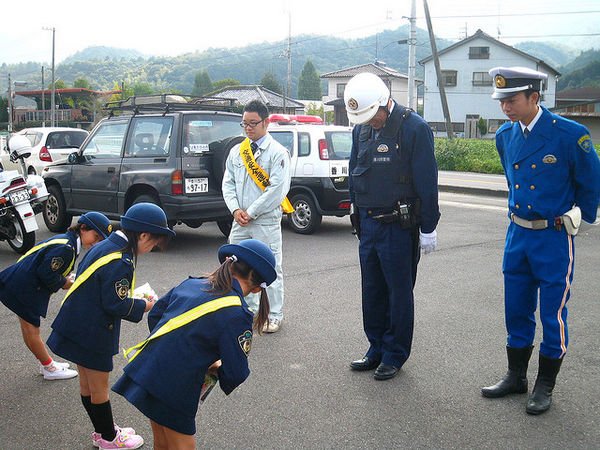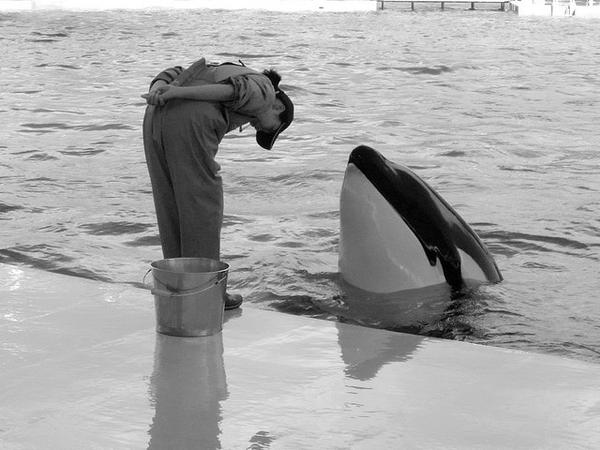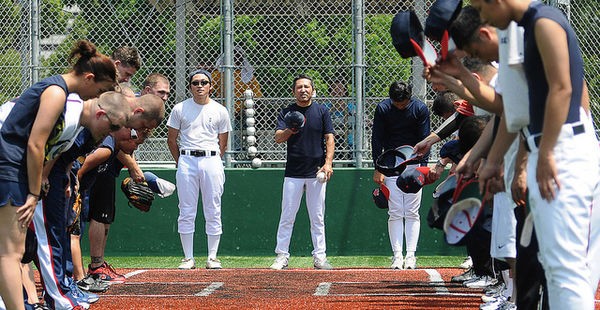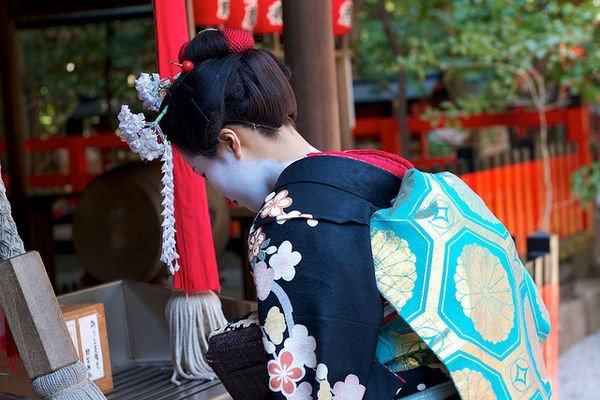Bowing the body is the most traditional form of greeting in Japan since the 8th century. It may seem simple, but the act of bowing in reverence, called ojigi [お辞儀] which literally means bow. Such a custom is full of meanings.
This show of respect is so important that the Japanese bow even when they are talking on the phone without anyone seeing. In today's article we will see several occasions where people should bow.
Depending on how it is done, it can indicate the degree of importance of both the person being greeted and the person greeting. There are situations where some bow down to the ground in another greeting called dogeza.
Here's a list of situations where the Japanese usually bow down, then we'll talk a little about each of them.
When apologizing During greetings Acknowledgments Introductions As a form of respect To customers In sports In performances In religious situations
Table of Content
Bow down when apologizing
As shown in the engraving at the beginning of the article, if you make a mistake, you should apologize and bow. A light apology requires that you lower your head slightly at 10 degrees.
Let's say you are a waiter and you spill hot coffee on a customer. You can make a 45-degree bow and say: Moushiwake Gozaimasen which literally means "I'm very sorry."
Now let's say you committed a crime, and you want to apologize to the victim. You should bow in a kneeling position and say: Makoto ni Moushiwake Gozaimasen deshita which means "sincerely apologize for what I did."
Bowing During Greetings
The most common greeting is to slightly lower the head and shoulders by up to 10 degrees. For the Japanese, such a movement is kind of automatic and sometimes it goes unnoticed because of how fast and short the tilt of the head is.
This gesture of respect is used both to greet and to say goodbye. In extremely formal circumstances a full bow can be performed. There are occasions when the classic handshake can be performed.

Bow while doing Acknowledgments
If someone gives you a place in line, it is common to bow your head superficially in thanks. It is also very common for drivers to bow their heads in thanks for small courtesies.
Any occasion you feel the need to thank a person can be a time to bow. It is quite likely that the person who also did the favor will bow their head slightly as a sign of nothing.
Bow down in Introductions
In casual and formal presentations, one should bow the upper body at an angle of up to 30 degrees. If the person is extremely important, you can bow up to 45 degrees. It is important to keep the head and shoulders straight and the arms aligned. There is no reason to maintain eye contact during a bow (it is considered rude).
In business, after exchanging the "meishi" (business cards) the parties involved should bow and maintain this position for a moment before returning to the upright position. Maintain a distance to avoid bumping heads (it happens).

Bow as a form of respect
The act of bowing is an expression of humility and always indicates respect. Some people tend to bow to animals or even objects. Even animals have become accustomed to it, and in Nara it is possible to see some deer bowing. In the photo, we have a caretaker bowing to a whale.

Bowing to customers
In Japan, customers are considered very important. It is very common for employees to bow to customers. Some shops and companies instruct their employees on the correct way to bow to a customer.
Bowing in Sports
Other occasions when the Japanese bow are before or after sporting events, martial arts, sumo, and even card games like Karuta. On these occasions, it is customary to bow up to 20 degrees.
At the beginning of a sport, the bow person says “yoroshiku onegai shimasu” and at the end when bowing he says “arigatou gozaimashita”. In some sports like martial arts and karuta, you must bow not just to your opponent but to the trainer or whoever is running the game.

Bowing in the Performances
As in the West, it is common for artists to bow in response to applause. In the presentation of a theater, geisha, events where actors, voice actors are present performing some presentation, even music shows.
In the case of geishas or traditional performances, the artists often bow completely on their knees.
Bow in religious situations
It is also common to bow slightly to the gods at a Shinto shrine. Shinto ceremonies almost always require a full bow from a kneeling position.

Of course, there are several other occasions when you should bow. If you know of one that hasn't been mentioned, please comment here.
